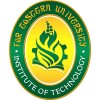Seminars and Trainings

Attendee
Review of Complex Engineering Problems
Awarded by FEU Tech College of Engineering on August 12, 2024
View Credential
Attendee
Tech-Enabled Pedagogies: Empowering Modern Teachers with Educational Technologies
Awarded by Educational Innovation and Technology Hub on August 09, 2023
View CredentialResearch Publications
Powered by:

Conference Paper · 10.1109/ICCAE64891.2025.10980552
Factor Contribution Evaluation for Sustainability Implementation in Post-Disaster Reconstruction Projects using Neural Network-based Sensitivity Analysis2025 17th International Conference on Computer and Automation Engineering (ICCAE), (2025), pp. 208-212
The factor evaluation for sustainability implementation in post-disaster reconstruction projects was conducted using artificial neural network (ANN)-based sensitivity analysis. The current study involves the utilization of Levenberg-Marquardt algorithm (LMA) for the ANN model development. The findings demonstrated that the governing network structure is 10-3-1 utilizing input parameters (IP) including waste management (Sl), environmental impact management (S2), support of management (S3), construction cost (S4), public health and safety (S5), user security (S6), noise pollution (S7), energy consumption (S8), public services (S9), and recycling (S10). The results revealed that the governing model (GM) has a performance of correlation (R) = 0.99813 and Mean Squared Error (MSE) and Mean Absolute Percentage Error (MAPE) of 0.00110 and 0.4240/0, respectively. Moreover, a sensitivity analysis (SA) using Garson's algorithm (GA) reveals a trend of the relative value (RV) was observed to be construction cost > public services > support of management > user security > environmental impact management> noise pollution> public health and safety> energy consumption > recycling > waste management wherein the construction cost is the most influential parameter to the sustainability rating in post-disaster reconstruction projects (PDRP). The study shows how well ANN can detect the crucial elements that determine a project's sustainability rating in the post-disaster reconstruction projects.

Book Chapter · 10.1007/978-981-96-1574-2_14
Development of Regression Model for Prediction of Corrosion Level in Polypropylene Fiber Reinforced Concrete Using Response Surface MethodologyLecture Notes in Civil Engineering, (2025), pp. 139-151
Corrosion stands as the primary cause behind the diminished service life of reinforced concrete structures, particularly in environments such as ports, harbors, bridges, and other offshore and near-shore locations where chloride-induced corrosion poses a significant threat. This study investigates the efficacy of three key parameters polypropylene fiber ratio (FR), concrete cover (CC), and bar diameter (∅)—in minimizing corrosion (CL) in reinforced concrete structures. Central Composite Design (CCD) of Response Surface Methodology (RSM) is employed to determine the optimal conditions for these parameters. The number of samples for Impressed Current (IC) testing is determined through this methodology. Initial analysis utilizing the full quadratic model yields a Predicted value R2 of 60.77%. However, employing backward elimination enhances the predictive capability, resulting in an improved R2 value of 87.53%. Sensitivity analysis utilizing the coded units of the RSM model reveals that the polypropylene fiber ratio exerts the most significant impact on corrosion levels, with a sensitivity value of -4.932. Consequently, optimization efforts are focused on this parameter, leading to the identification of an optimized value of 1.17% for FR, which results in minimal corrosion. This research underscores the effectiveness of employing RSM techniques in optimizing corrosion mitigation strategies in reinforced concrete structures, with FR emerging as a critical determinant in achieving corrosion resistance.

